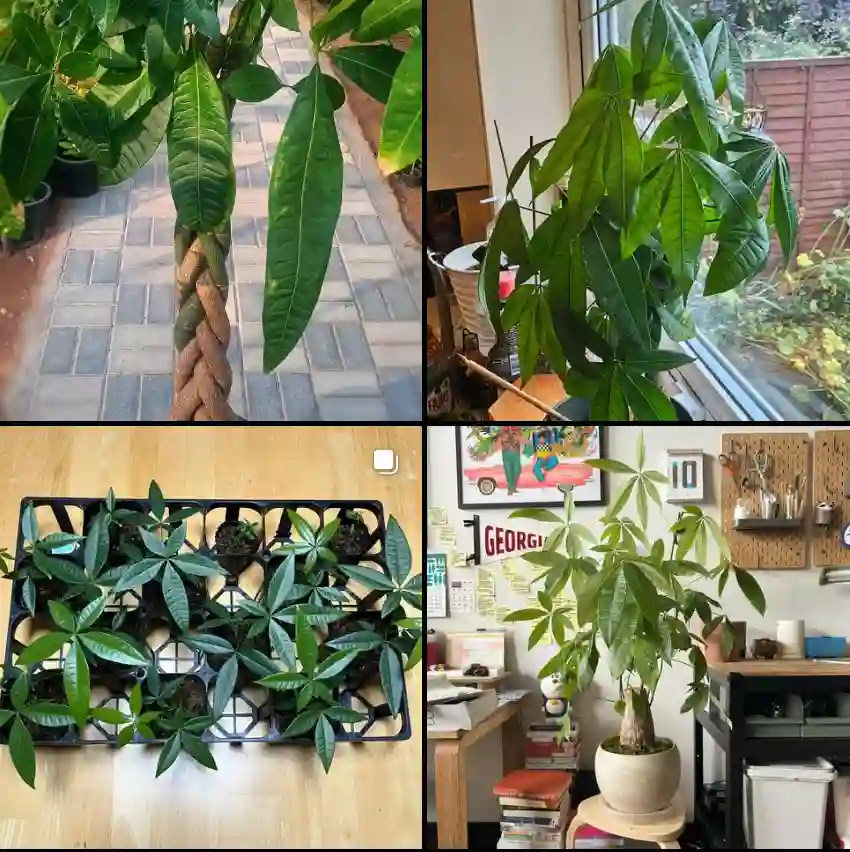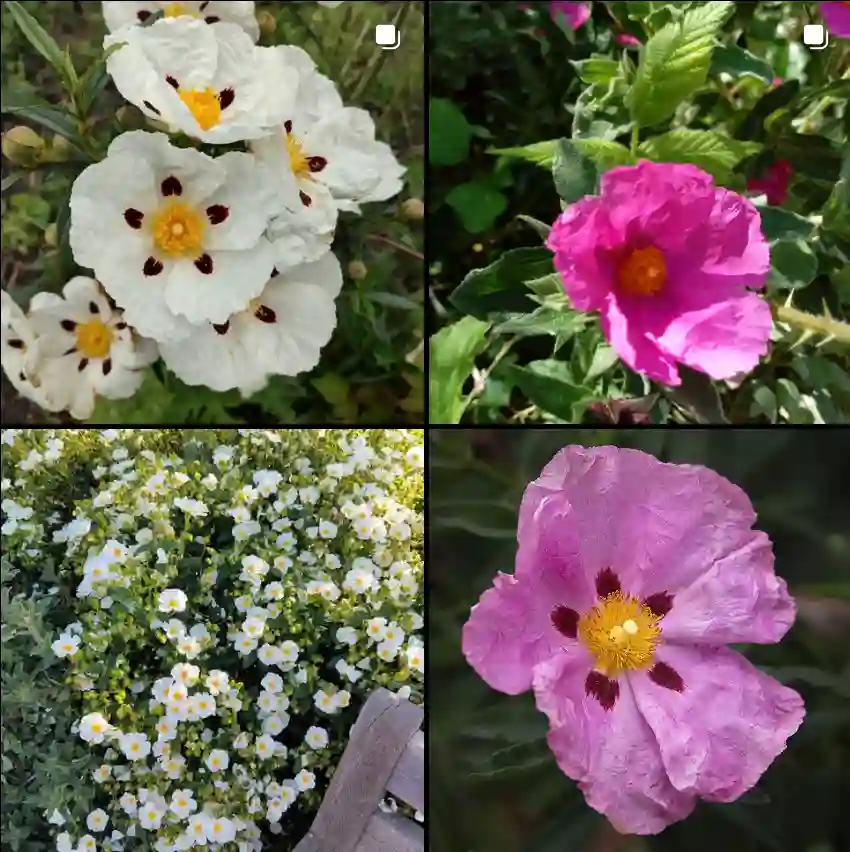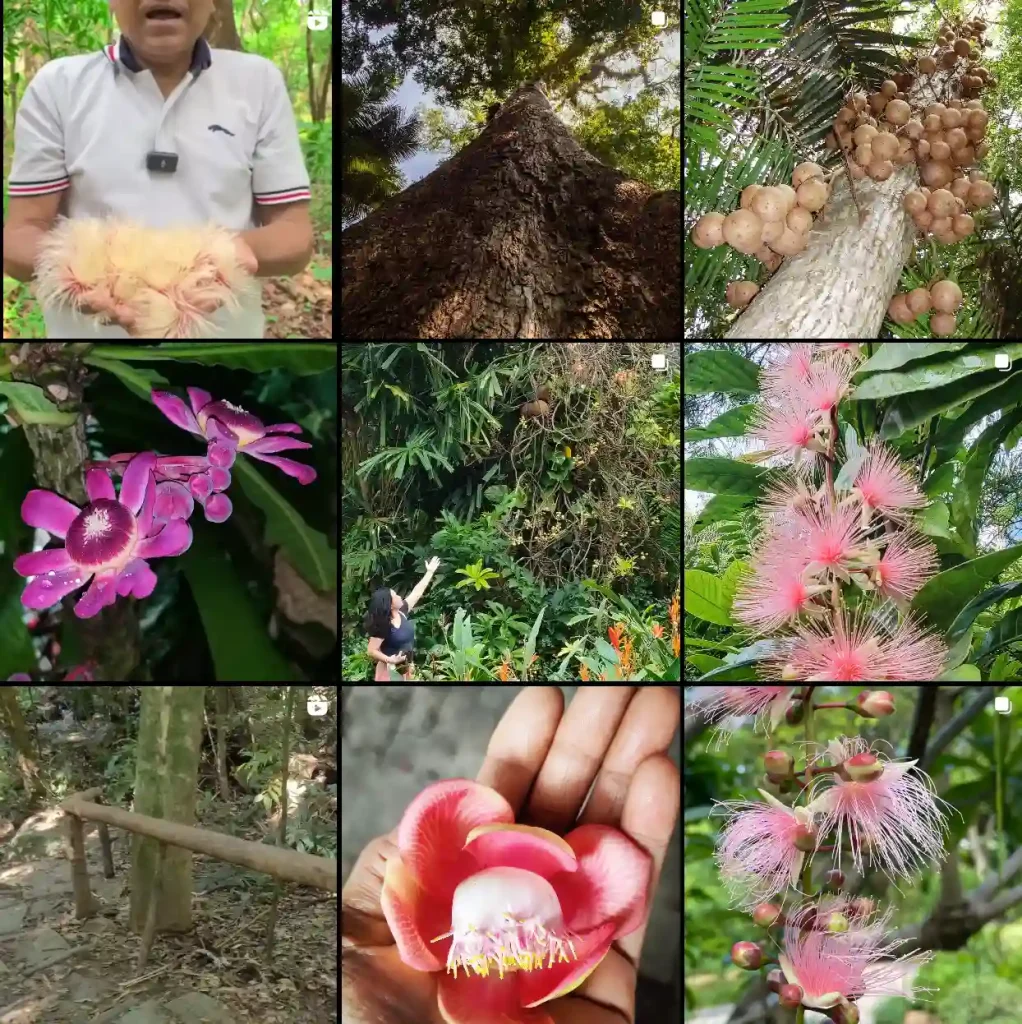Ferb Vu Explores the Malvaceae Plant Family: A World of Beauty and Utility
As a passionate botany enthusiast, I’ve always been captivated by the diverse world of plants. Recently, my curiosity led me to delve deeper into the fascinating Malvaceae plant family, a group known for its striking beauty, economic importance, and ecological significance. In this article, I’ll share my discoveries about this remarkable plant family, including its characteristics, notable genera, and the valuable role it plays in our lives.
Key Characteristics of the Malvaceae Family
The Malvaceae family, also referred to as the mallow family, comprises a vast array of flowering plants, estimated to include over 246 genera and more than 4,200 species. These plants are distributed across various habitats worldwide, from tropical rainforests to arid deserts.
Genera of the Malvaceae Family
The Malvaceae family boasts an impressive array of genera, each with its unique characteristics and uses:
- Abelmoschus Medik. – 13 Species in Genus Abelmoschus
- Abroma Jacq.
- Abutilon Mill. – 178 Species in Genus Abutilon
- Acaulimalva Krapov. –
- Acropogon Schltr.
- Adansonia L.
- Aguiaria Ducke
- Akrosida Fryxell & Fuertes
- Alcea L. – 82 Species in Genus Alcea
- Allobriquetia Bovini
- Allosidastrum (Hochr.) Krapov., Fryxell & Bates
- Allowissadula D.M.Bates
- Althaea L. – 10 Species in Genus Althaea
- Alyogyne Alef.
- Ancistrocarpus Oliv.
- Andeimalva J.A.Tate
- Andringitra Skema
- Androcalva C.F.Wilkins & Whitlock
- Anisodontea C.Presl
- Anoda Cav.
- Anotea (DC.) Kunth
- Apeiba Aubl.
- Argyrodendron F.Muell.
- Asterotrichion Klotzsch
- Ayenia L.
- Azanza Alef.
- Bakeridesia Hochr.
- Bastardiastrum (Rose) D.M.Bates
- Batesimalva Fryxell
- Bernoullia Oliv.
- Berrya Roxb.
- Billieturnera Fryxell
- Bombax L.
- Bombycidendron Zoll. & Moritzi
- Bordasia Krapov.
- Boschia Korth.
- Brachychiton Schott & Endl. – 40 Species in Genus Brachychiton
- Briquetia Hochr.
- Brownlowia Roxb.
- Burretiodendron Rehder
- Callianthe Donnell
- Callirhoe Nutt. – 9 Species in Genus Callirhoe
- Calyculogygas Krapov.
- Calyptraemalva Krapov.
- Camptostemon Mast.
- Carpodiptera Griseb.
- Catostemma Benth.
- Cavanillesia Ruiz & Pav.
- Ceiba Mill. – 19 Species in Genus Ceiba
- Cenocentrum Gagnep.
- Cephalohibiscus Ulbr.
- Cheirolaena Benth.
- Chiranthodendron Larreat.
- Christiana DC.
- Cienfuegosia Cav.
- Clappertonia Meisn.
- Coelostegia Benth.
- Cola Schott & Endl. – 134 Species in Genus Cola
- Colona Cav.
- Commersonia J.R.Forst. & G.Forst.
- Corchoropsis Siebold & Zucc.
- Corchorus L.
- Corynabutilon (K.Schum.) Kearney
- Craigia W.W.Sm. & W.E.Evans
- Cristaria Cav.
- Cullenia Wight
- Decaschistia Wight & Arn.
- Dendrosida J.E.Fryxell
- Desplatsia Bocq.
- Dicarpidium F.Muell.
- Dicellostyles Benth.
- Diplodiscus Turcz.
- Dirhamphis Krapov.
- Dombeya Cav. – 198 Species in Genus Dombeya
- Duboscia Bocq.
- Durio Adans. – 28 Species in Genus Durio
- Eleutherostylis Burret
- Entelea R.Br.
- Eremalche Greene
- Erinocarpus Nimmo ex J.Graham
- Eriolaena DC.
- Eriotheca Schott & Endl.
- Erioxylum Rose & Standl.
- Firmiana Marsili
- Franciscodendron B.Hyland & Steenis
- Fremontodendron Coville – 3 Species in Genus Fremontodendron
- Fryxellia D.M.Bates
- Fuertesimalva Fryxell
- Gaya Kunth
- Gilesia F.Muell.
- Glossostemon Desf.
- Glyphaea Hook.f.
- Goethalsia Pittier
- Gossypioides Skovst. ex J.B.Hutch.
- Gossypium L. – 55 Species in Genus Gossypium
- Grewia L. – 274 Species in Genus Grewia
- Guazuma Mill.
- Guichenotia J.Gay
- Gynatrix Alef.
- Gyranthera Pittier
- Hafotra Dorr
- Hampea Schltdl.
- Hannafordia F.Muell.
- Harmsia K.Schum.
- Helicteres Pluk. ex L.
- Helicteropsis Hochr.
- Heliocarpus L.
- Herissantia Medik.
- Heritiera Aiton
- Hermannia L.
- Hibiscadelphus Rock
- Hibiscus L. – 439 Species in Genus Hibiscus
- Hildegardia Schott & Endl.
- Hochreutinera Krapov.
- Hoheria A.Cunn.
- Horsfordia A.Gray
- Howittia F.Muell.
- Huberodendron Ducke
- Humbertiella Hochr.
- Hydrogaster Kuhlm.
- Iliamna Greene – 8 Species in Genus Iliamna
- Indagator Halford
- Jarandersonia Kosterm.
- Julostylis Thwaites
- Jumelleanthus Hochr.
- Kearnemalvastrum D.M.Bates
- Kitaibelia Willd.
- Kleinhovia L.
- Kokia Lewton – 4 Species in Genus Kokia
- Kosteletzkya C.Presl
- Kostermansia Soegeng
- Krapovickasia Fryxell
- Kydia Roxb.
- Lagunaria (A.DC.) Rchb.
- Lasiopetalum Sm.
- Lawrencia Hook.
- Lebronnecia Fosberg & Sachet
- Lecanophora Speg.
- Leptonychia Turcz.
- Luehea Willd.
- Lueheopsis Burret
- Lysiosepalum F.Muell.
- Malachra L.
- Malacothamnus Greene
- Malope L. – 4 Species in Genus Malope
- Malva Tourn. ex L. – 62 Species in Genus Malva
- × Malvalthaea Iljin
- Malvastrum A.Gray
- Malvaviscus Fabr.
- Malvella Jaub. & Spach
- Mansonia J.R.Drumm.
- Marcanodendron Doweld
- Matisia Bonpl.
- Maxwellia Baill.
- Megatritheca Cristóbal
- Megistostegium Hochr.
- Melhania Forssk.
- Melochia L.
- Meximalva Fryxell
- Microcos Burm. ex L.
- Modiola Moench
- Modiolastrum K.Schum.
- Mollia Mart.
- Monteiroa Krapov.
- Mortoniodendron Standl. & Steyerm.
- Napaea L.
- Nayariophyton T.K.Paul
- Neesia Blume
- Neobaclea Hochr.
- Neobrittonia Hochr.
- Neobuchia Urb.
- Neoregnellia Urb.
- Nesogordonia Baill.
- Nototriche Turcz.
- Ochroma Sw.
- Octolobus Welw.
- Pachira Aubl. – 54 Species in Genus Pachira
- Palaua Cav.
- Papuodendron C.T.White
- Patinoa Cuatrec.
- Pavonia Cav. – 291 Species in Genus Pavonia
- Peltaea (C.Presl) Standl.
- Pentace Hassk.
- Pentapetes L.
- Pentaplaris L.O.Williams & Standl.
- Periptera DC.
- Perrierophytum Hochr.
- Phragmocarpidium Krapov.
- Phragmotheca Cuatrec.
- Phymosia Desv.
- Physodium C.Presl
- Pityranthe Thwaites
- Plagianthus J.R.Forst. & G.Forst.
- Pochota Ram.Goyena
- Pseudabutilon R.E.Fr.
- Pseudobombax Dugand
- Pseudocorchorus Capuron
- Pterocymbium R.Br.
- Pterospermum Schreb.
- Pterygota Schott & Endl.
- Quararibea Aubl.
- Radyera Bullock
- Reevesia Lindl.
- Rhodognaphalon (Ulbr.) Roberty
- Rhynchosida Fryxell
- Ripariosida Weakley & D.B.Poind.
- Robinsonella Rose & Baker f.
- Roifia Verdc.
- Rojasimalva Fryxell
- Ruizia Cav.
- Scaphium Schott & Endl.
- Scaphopetalum Mast.
- Schoutenia Korth.
- Scleronema Benth.
- Senra Cav.
- Septotheca Ulbr.
- Seringia J.Gay
- Sida L. – 275 Species in Genus Sida
- Sidalcea A.Gray ex Benth. – 29 Species in Genus Sidalcea
- Sidasodes Fryxell & Fuertes
- Sidastrum Baker f.
- Sparrmannia L.f.
- Sphaeralcea A.St.-Hil.
- Spirabutilon Krapov.
- Spirotheca Ulbr.
- Sterculia L.
- Tarasa Phil.
- Tetralix Griseb.
- Tetrasida Ulbr.
- Theobroma L. – 30 Species in Genus Theobroma
- Thepparatia Phuph.
- Thespesia Sol. ex Corrêa
- Thomasia J.Gay
- Tilia L. – 38 Species in Genus Tilia – Linden Tree
- Trichospermum Blume
- Triplochiton K.Schum.
- Triumfetta Plum. ex L.
- Tropidococcus Krapov.
- Ungeria Schott & Endl.
- Urena Dill. ex L. – 7 Species in Genus Urena
- Urocarpidium Ulbr.
- Vasivaea Baill.
- Waltheria L.
- Wercklea Pittier & Standl.
- Wissadula Medik.
- Woodianthus Krapov.
The Malvaceae Family’s Role in Our Lives
The Malvaceae family plays a vital role in our lives, providing us with a wealth of resources and benefits. From food and fiber to medicine and ornamental beauty, these plants contribute significantly to our well-being and economic prosperity. Moreover, they play an essential ecological role, providing habitat and food for various pollinators and other wildlife.
In conclusion, my exploration of the Malvaceae plant family has deepened my appreciation for the remarkable diversity and utility of the plant kingdom. This family’s stunning flowers, valuable crops, and ecological importance serve as a testament to the interconnectedness of life on Earth. As I continue my botanical journey, I eagerly anticipate uncovering more fascinating secrets hidden within the world of plants.
If i die, water my plants!



